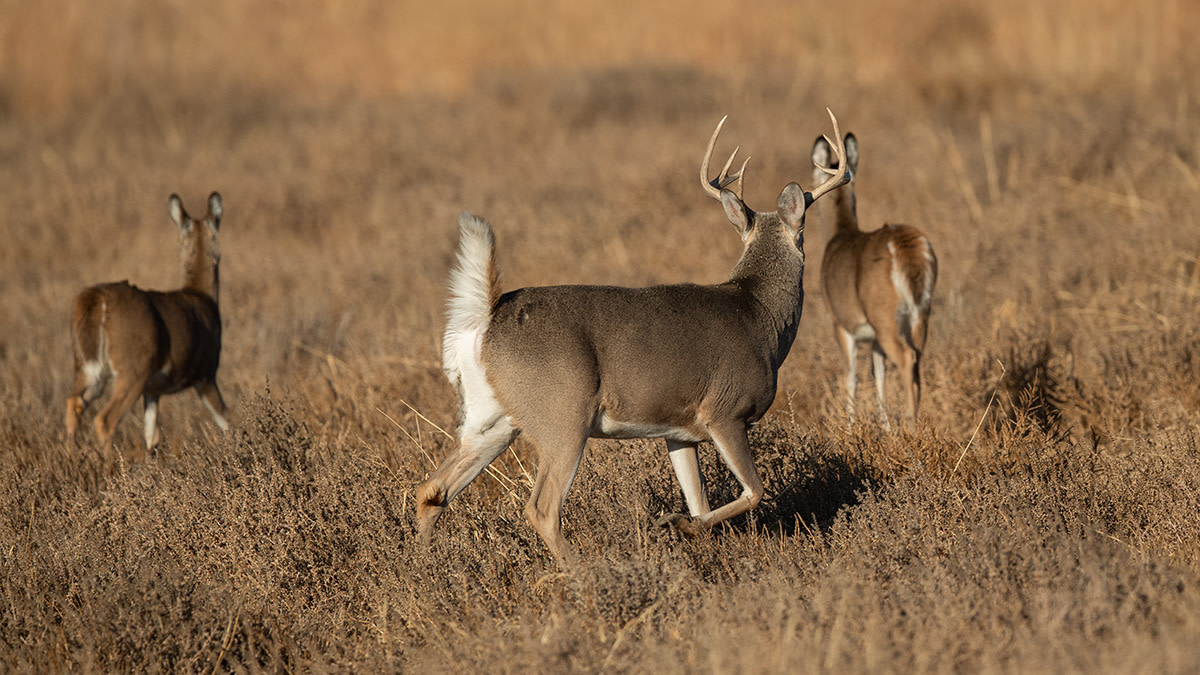
Have you ever stumbled upon a new deer hunting spot completely riddled with intersecting trails, rubs, and scrapes, yet despite many hunts, you’ve never been able to take a deer in that spot? The spot has all the right ingredients, your trail cameras light up with mature bucks, yet every hunt you throw at this spot, you come up short for one reason or another. If this sounds familiar, you might be falling right into the whitetail’s lap without even knowing it. This is the whitetail trap, and it happens to the best of us.
The Problem
As we’ve all heard before, “They don’t get old by being dumb.” Deer, like all prey animals, are constantly aware of their surroundings. Where they choose to eat and sleep is not by happenstance. If you think about it, mature deer prefer to feed in the low spot of a field for a reason. The same reason why mature bucks tend to prefer feeding near cover or under the cover of darkness. In terms of bedding, you’ll also notice that most deer beds will typically have thick back-cover, making a difficult and noisy approach from behind, often combined with an elevated view, giving them the ability to see approaching danger.
Consider the previous scenario: an area with ample deer sign, yet no deer on the ground. Why do you think that is?
The short answer is that deer spend time in this area because it works in their favor. An example of this that I see time and time again is the treestand setup in a tight creek bottom or in the mouth of a drainage. To the bowhunter, these spots look amazing. The terrain funnels deer into a small area, which is always good news for a bowhunter. Not only are the deer funneled by these terrain features, but they spend a significant amount of time in these creek bottoms, as evidenced by the amount of sign you’ll find in these locations. They spend time in these tight areas because the wind is almost guaranteed to be in their favor, no matter the direction.
This is nothing new, most bowhunters know that the wind swirls in creek bottoms, but our excitement about the spot often gets the best of us. We think that maybe the wind will be blowing in a safe direction when the time comes. The cold, hard truth is that nine times out of ten, it won’t work out in your favor.
Think of your human scent like blood in the water. Whether fact or fiction, we’ve all heard the one about sharks smelling a drop of blood in the water. A whitetail deer’s nose is every bit as impressive. Just because your scent is momentarily blowing safely away from the deer, your old scent is still lingering, though diluted, just like blood being diluted in water. In the creek bottom scenario, the swirling wind is lingering all around you, no matter what direction the deer approach from.
Wind isn’t the only trap. Sometimes these sign-heavy spots are favored by deer because of the visual advantage that they have. Examples that I’ve come across are open-country creek bottoms. When scouting, you’ll notice a concentration of deer sign in an area that is difficult to access without being seen. Even in heavily forested hill country, the same scenario often plays out, especially on pressured ground. These deer know what direction hunters access from and take a liking to bedding on the opposing hillside, with a view of danger approaching from the public parking area.
The Solution
The solution may seem obvious, but spend time hunting and scouting public land, and you’ll find countless stands that are set up in these traps. I, too, fall victim to the trap, the excitement of finding a gem of a spot can easily get the best of us and turn us all into gamblers. There is a time and a place for a go-for-broke hunt strategy, like when time is running short on a hunt, but in the whitetail world, this isn’t often the case. Archery seasons are fairly long, and the odds will be stacked in your favor the more time you spend sitting in a fresh stand.
What I’ve learned is that when scouting a new area, finding heavy deer sign is great and will get any deer hunter excited. However, just as important as finding the spot with the highest probability of a deer encounter, you need to prioritize the area that works the best for you, not the deer.
To do this, simply investigate the perimeter of these deer honey holes until you find a nearby spot with consistent winds, quiet and discrete access, and a tree that offers enough cover to hide your silhouette easily. Even though you’re not in the middle of the action, your success rate will skyrocket.
Sure, there might be five different trails leading to your newfound honey hole, and you’re now only hunting two of those trails, odds are actually in your favor. You can’t kill a deer if he smells you first, so once you’ve found a spot allowing you undetected access, combined with a wind direction that consistently works in your favor, you can now hunt this spot over and over again.
You might find out that it only takes you two or three hunts to cross paths with the buck you’re after. Finding a spot that works in your favor, instead of the deer’s, will take a bit of trial and error, tact, and discipline, but I promise it will put more deer in the back of your truck.
Feature image via Matt Hansen.




